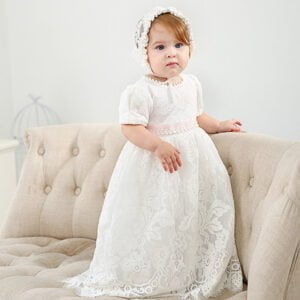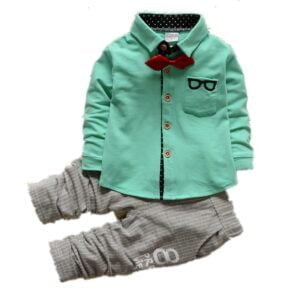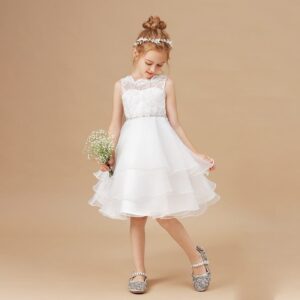The Importance of Proper Fitting Clothes for Children
Getting the right fit for children’s clothes can be tricky. Kids grow fast, and sizes can vary between brands. As a parent, I know how frustrating it can be to buy clothes that don’t fit properly. That’s why I’m sharing my tips on how to measure kids for clothes accurately.
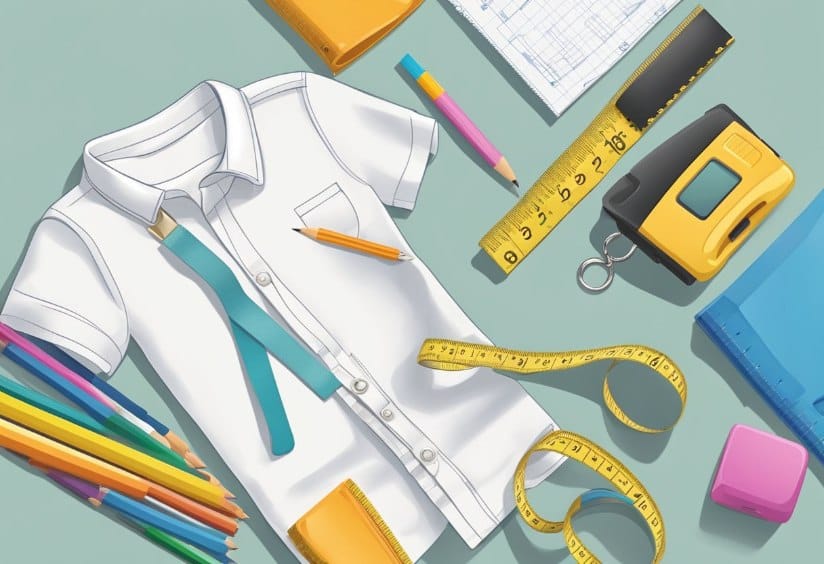
To measure a child for clothing, you’ll need a soft measuring tape, a pencil, and paper to record the measurements. Measure around the largest part of the chest, the waist at belly button level, and the hips at their widest point. For trousers and skirts, measure the inseam from the crotch to the ankle.
Taking accurate measurements helps ensure a better fit when shopping for children’s clothes. It’s especially useful when buying online or for special occasions when you want to get the size just right. With these measurements in hand, you’ll be able to choose the best size for your child with confidence.
Key Takeaways
- Accurate measurements are crucial for finding well-fitting children’s clothes
- Use a soft measuring tape for chest, waist, hip, and inseam measurements
- Regular measuring helps track growth and ensures proper sizing over time
Understanding Children’s Clothing Sizes
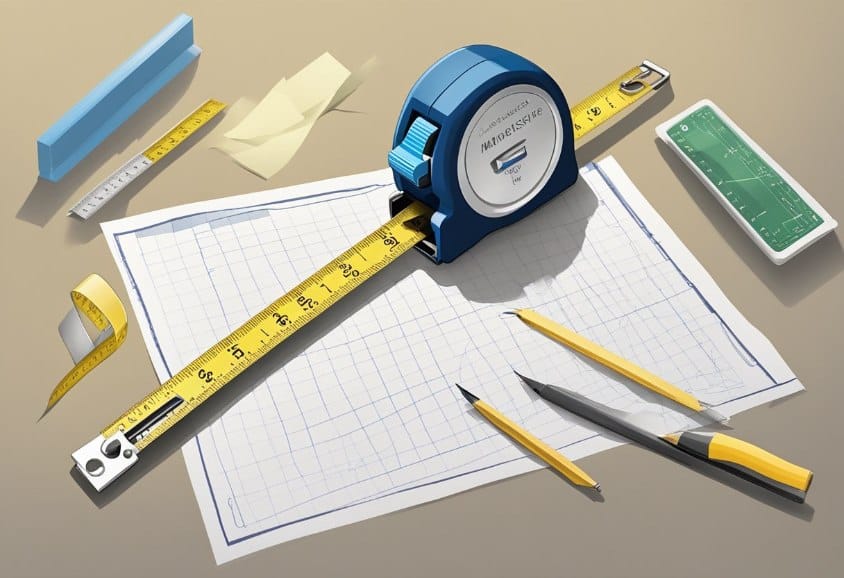
Kids’ clothing sizes can be confusing. I’ll explain how to make sense of the different sizing systems and charts. This will help you pick the right fit for your child.
Size Range and Sizing Categories
Children’s clothes are often sized by age and height. For babies and toddlers, sizes usually go by months (0-3, 3-6, 6-12, etc.). For older kids, they’re labelled by age (2-3 years, 4-5 years).
Some brands use number sizes (2, 4, 6, 8) instead. These roughly match ages but can vary. As kids grow, sizes might switch to S, M, L, XL.
It’s important to know that sizes can differ between brands. A 3-year-old might wear size 2-3 in one shop, but 3-4 in another. That’s why it’s crucial to check measurements.
Reading Size Charts and Guides
Size charts are key for finding the right fit. They usually show measurements for height, chest, waist, and hips. Some include weight too.
To use a chart:
- Measure your child
- Find their measurements on the chart
- Pick the size that matches most measurements
If your child’s between sizes, I suggest going for the larger one. Kids grow fast!
Many shops have their own sizing guides. These can be really helpful. They often explain how their clothes fit and give tips for tricky items like swimwear or coats.
Remember, these charts are just a starting point. Trying clothes on is still the best way to check the fit.
Preparing to Measure Your Child
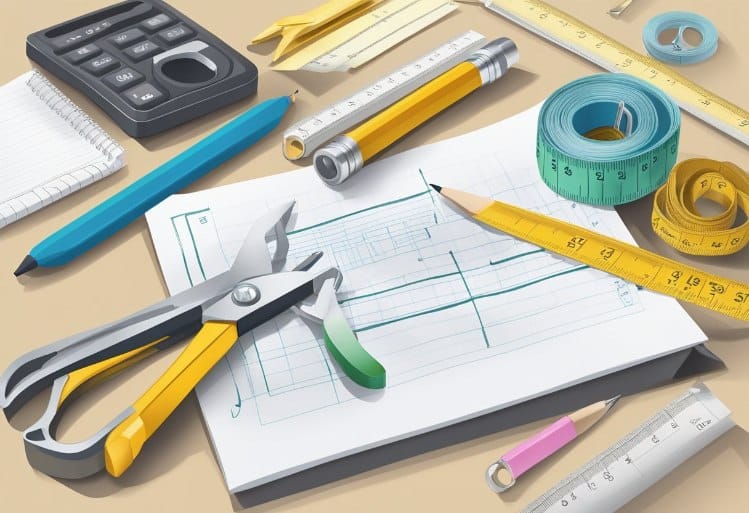
Before taking measurements, it’s crucial to get ready. I’ll explain how to choose the right measuring tape and ensure a comfortable fit for your child.
Choosing the Right Measuring Tape
To measure your child accurately, I recommend using a flexible cloth or plastic measuring tape. These are easy to wrap around the body and give precise readings.
Avoid using metal tape measures as they can be uncomfortable and may not bend easily around curves. Make sure the tape measure is in good condition with clear markings.
I suggest keeping a notepad and pen handy to jot down measurements as you go. This helps prevent forgetting or mixing up numbers.
Ensuring a Comfortable Fit
To get the best measurements, I advise having your child wear thin, form-fitting clothes. Bulky clothing can lead to inaccurate readings.
Ask your child to stand straight with arms relaxed at their sides. This natural posture gives the most accurate results.
I recommend taking measurements in a well-lit area with a mirror nearby. This helps you see that the tape is level and not twisted.
Keep the measuring session brief to avoid tiring your child. If they become restless, take a short break before continuing.
Taking Body Measurements
Accurate body measurements are key to finding well-fitting clothes for kids. I’ll explain how to measure the most important areas of a child’s body for clothing.
Measuring Chest and Hip Circumference
For the chest measurement, I wrap the tape measure around the widest part of the child’s chest, usually just under the armpits. I make sure the tape is snug but not tight.
To measure hip circumference, I place the tape around the fullest part of the hips, about 7-9 inches below the waist. I keep the tape level and parallel to the floor.
For both measurements, I have the child stand straight with arms relaxed at their sides. I take care not to pull the tape too tight, as this can lead to ill-fitting clothes.
Determining Waist and Inside Leg Measurements
To measure the waist, I wrap the tape around the natural waistline, which is usually the narrowest part of the torso. I ask the child to breathe normally and stand relaxed.
For the inside leg, I measure from the crotch to the ankle bone. This is crucial for trousers and shorts. I make sure the child stands straight with feet slightly apart.
I always double-check these measurements, as they’re vital for a good fit in bottoms and dresses.
Noting Height and Weight Considerations
I measure height by having the child stand against a wall without shoes. I use a flat object on their head to mark the wall, then measure from floor to mark.
For weight, I use a digital scale for accuracy. I note both height and weight, as they help in choosing the right size range for clothes.
I also consider the child’s build. Some kids may be tall for their age but slim, or shorter but stocky. This affects how different clothing styles will fit.
Selecting the Appropriate Garment Size
Choosing the right size for children’s clothes can be tricky. Kids grow quickly, so it’s important to find garments that fit well now and allow some room for growth.
Using Size Guides Effectively
I’ve found that size guides are very helpful when shopping for kids’ clothes. Most brands provide size charts based on age and measurements. I always check these before buying.
It’s best to use your child’s actual measurements rather than just their age. I measure their chest, waist, hips, and height. Then I compare these to the size guide.
Some brands run small or large, so I read customer reviews for sizing tips. I also look for adjustable features like elastic waistbands or adjustable straps.
Understanding the Relation Between Size and Comfort
A comfortable fit is crucial for children’s clothes. Clothes that are too tight can restrict movement and be uncomfortable. Too loose, and they may pose safety risks.
I aim for a bit of growing room, but not so much that the clothes swamp my child. For everyday wear, I choose slightly roomier sizes. For formal wear, I opt for a closer fit.
I always consider the fabric. Stretchy materials offer more flexibility in sizing. Woven fabrics have less give, so I’m more careful with those.
Special Considerations for Baby Clothing
When dressing babies, it’s crucial to consider their rapid growth and sensitive skin. I’ll cover key points about adjusting measurements and choosing suitable fabrics for baby clothes.
Adjusting Measurements for Growth
Babies grow quickly, so I recommend buying clothes slightly larger than their current size. Newborns typically need 8 to 10 sleepsuits for 3 to 5 days. I suggest checking the size chart carefully, as they can vary between brands.
For instance, a 3-6 month size might fit babies 12-17 pounds and 23-27 inches in one brand, while another’s 3-month size fits 9-12.5 pounds and 21.5-24 inches. I always measure the baby’s chest, waist, and length to ensure a proper fit.
Look for adjustable features like elastic waistbands or expandable shoulder snaps. These allow clothes to fit longer as the baby grows.
Choosing Fabrics and Styles
I always prioritise soft, breathable fabrics for baby clothes. Cotton is an excellent choice as it’s gentle on sensitive skin and helps regulate body temperature.
Avoid clothes with rough seams or scratchy tags that might irritate the baby’s skin. I prefer styles with wide neck openings or envelope necklines for easy dressing.
Sleepsuits with built-in feet are practical for newborns. As babies start crawling, I switch to separates like tops and trousers for more flexibility.
I also consider the season when choosing fabrics. Light layers work well for easy temperature adjustments.
Frequently Asked Questions
Taking accurate measurements is crucial for finding well-fitting clothes for children. I’ll address some common questions about measuring kids for clothing.
How can I accurately measure my child’s waist size?
To measure your child’s waist, wrap a tape measure around their natural waistline. This is typically just above the belly button. Make sure the tape is snug but not tight. Have your child breathe normally and take the measurement.
What is the correct way to assess a child’s chest dimensions for clothing?
For chest measurements, wrap the tape measure around the fullest part of the chest, usually at the nipple level. Ensure the tape is parallel to the ground and snug against the body. Ask your child to stand straight with arms relaxed at their sides.
How should I determine the hip measurement for children’s apparel?
To measure hips, place the tape measure around the widest part of the hips. This is typically about 7-9 inches below the waist. Keep the tape level and snug, but not tight enough to compress the flesh.
What is the proper technique for measuring a boy’s inseam?
For inseam measurements, have your child stand with feet slightly apart. Measure from the crotch seam down the inside of the leg to the ankle bone. Make sure they’re wearing shoes similar to what they’ll wear with the trousers.
How do you measure a child’s clothing size at home with precision?
To measure your child at home, use a flexible tape measure and a piece of paper. Have your child stand straight in lightweight clothes. Take measurements for chest, waist, hips, and height. Write down each measurement for reference.
What clothing size is generally appropriate for a 7-year-old?
Clothing sizes for 7-year-olds can vary. Generally, a 7-year-old might wear size 6 or 7. However, it’s best to use your child’s actual measurements rather than relying solely on age. Remember that children grow at different rates.


